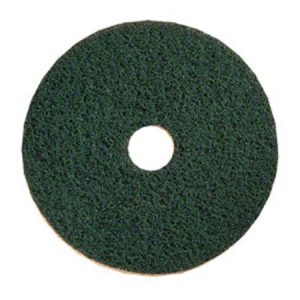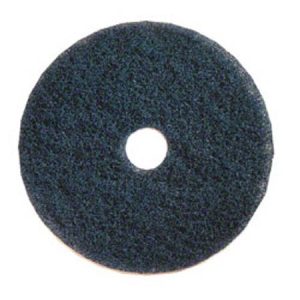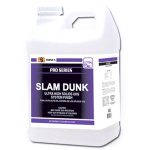Maintaining commercial floors not only enhances their appearance but also extends their lifespan. Two common methods for preserving floor finishes are the “Scrub and Recoat” and “Full Strip and Wax” techniques. Choosing the right approach can significantly impact the efficiency, cost, and longevity of floor maintenance.
The Challenge of Floor Maintenance
Commercial floors endure high foot traffic, resulting in wear and tear that can diminish their appearance and durability. Traditional full strip and wax processes, while thorough, are often labor-intensive, costly, and disruptive to business operations. They involve completely removing the old finish and applying new layers, requiring significant time and resources.
The Scrub and Recoat Solution
What is Scrub and Recoat?
Scrub and recoat is a maintenance technique that involves deep cleaning the top layer of the floor finish and then applying one or two new coats of finish. This method targets the topsoil and preserves much of the existing finish layer.
Key Benefits
- Cost Efficiency: Scrub and recoat uses fewer materials and less labor compared to a full strip and finish, resulting in lower overall costs.
- Time-Saving: This method is significantly faster, minimizing downtime and disruption to daily operations—a crucial advantage for high-traffic commercial environments.
- Sustainability: By reducing the frequency of complete finish removals, scrub and recoat is a more environmentally friendly option as it minimizes chemical waste.
- Extended Floor Life: Regularly removing only the top layer of soil and damage helps protect the integrity of the flooring material over time.
When to Choose Scrub and Recoat
Scrub and recoat is ideal for floors that do not have significant finish buildup or deeply embedded dirt. It is an excellent routine maintenance option to refresh the floor’s appearance and extend the interval between more intensive strip and finish processes.
Benefits of Using Green & Blue Pads for Deep Scrubbing
Green Pads
 Green pads are generally designed for deep cleaning and scrubbing applications: https://catalog.chemcraftind.com/catalog/p/126524CASE/SSS-Green-Scrubbing-Floor-Pad-20-/
Green pads are generally designed for deep cleaning and scrubbing applications: https://catalog.chemcraftind.com/catalog/p/126524CASE/SSS-Green-Scrubbing-Floor-Pad-20-/
Here are the benefits of using green pads:
- Aggressive Cleaning: Green pads are moderately aggressive and are excellent for removing scuff marks and deeper, ingrained dirt that lighter pads cannot handle. This makes them ideal for high-traffic areas where floors can accumulate substantial dirt and debris.
- Surface Preparation: Before recoating, floors often require thorough cleaning to ensure the new finish adheres properly. Green pads effectively clean the surface without damaging the underlying floor, preparing it for a new coat of wax or finish.
- Durability: Green pads are durable and designed for heavy-duty cleaning, providing good longevity and performance, which can reduce the frequency of pad replacement.
Blue Pads
 Blue pads are slightly less abrasive than green pads but still offer effective cleaning capabilities: https://catalog.chemcraftind.com/catalog/p/126521CASE/SSS-Blue-Cleaning-Floor-Pad-20-/
Blue pads are slightly less abrasive than green pads but still offer effective cleaning capabilities: https://catalog.chemcraftind.com/catalog/p/126521CASE/SSS-Blue-Cleaning-Floor-Pad-20-/
Here are the benefits of using blue pads:
- Versatile Cleaning: Blue pads are versatile and suited for both general cleaning and removing minor scuffs and scratches. They can be used on a variety of floor types without causing damage.
- Optimal for Lighter Scrubbing Needs: For floors that do not require the aggressiveness of a green pad, blue pads provide a gentler option that still effectively cleans and prepares the floor for recoating.
- Finish Enhancement: Blue pads are often used for spray buffing or light scrubbing applications that enhance the floor’s finish by smoothing out the existing coat and preparing it for additional finishing products.
Choosing the Right Pad
Selecting between a green and a blue pad depends on the specific needs of your flooring and the condition it is in:
- Condition of the Floor: Heavily soiled or scratched floors might benefit more from the aggressive cleaning provided by green pads, while floors with lighter dirt accumulation or those that are more delicate might be better suited for blue pads.
- Desired Outcome: If the goal is to deeply clean the floor in preparation for a new finish, green pads might be the preferred choice. For routine cleaning that enhances the floor’s appearance without extensive stripping, blue pads are more appropriate.
- Type of Floor: Consider the type of flooring material. Softer flooring materials like linoleum or laminates might be better served by the less abrasive blue pads, whereas harder materials like vinyl composite tile (VCT) or terrazzo can handle the more aggressive green pads.
Both green and blue pads serve important roles in the maintenance of commercial floors, providing options for different levels of scrubbing intensity. Understanding the specific needs of your floor will guide you in choosing the most effective pad, ultimately leading to better maintenance outcomes and longer floor life. If you have questions, you can always call us for more information at 773-929-6800
What Floor Finish To Use
Comparing with Full Strip and Wax
Full Strip and Wax Overview
A full strip and wax involves stripping all the old wax from the floor and then applying several new layers of wax. While this method can restore floors that are severely damaged or heavily soiled, it requires more time, labor, and materials.
Applications
Full strip and wax is necessary when the floor has yellowing, deep scratches, or multiple wax layers that have collected dirt and grime over time. However, for regular maintenance, this method may be more than what is required, leading to unnecessary expenditure and effort.
Maintaining Your Commercial Floors
For many commercial environments, the scrub and recoat method offers a pragmatic and efficient solution for maintaining floor aesthetics and longevity. It aligns with the needs of businesses to keep operations running smoothly while managing maintenance costs and environmental impact. By integrating scrub and recoat into regular floor care routines, facilities can enjoy pristine floors with minimal disruption and optimal resource use. To implement an effective floor maintenance program, consider the specific needs of your space, traffic patterns, and the type of flooring material. Regular assessments of the floor condition can help determine the best maintenance strategy—be it scrub and recoat or occasional full strip and wax—to keep your commercial floors in top condition. If you have any questions on which strategy is right for you, please contact us today: https://www.chemcraftind.com/contact/

 https://catalog.chemcraftind.com/catalog/p/350639CASE/SSS-Slam-Dunk-25-Ultra-High-Solids-System-Finish-25-Gal/
https://catalog.chemcraftind.com/catalog/p/350639CASE/SSS-Slam-Dunk-25-Ultra-High-Solids-System-Finish-25-Gal/